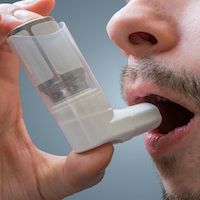Study Indicates Real-Life Usefulness of Core Outcome Measures for Severe Asthma
These new findings suggest the COMSA parameters may have applicability for standardizing observational studies’ results for pediatric patients with asthma.

Biologic therapies for severe asthma in pediatric patients are safe and effective in improving quality of life and other related measures, according to recent findings evaluated through newly-developed standardized core outcome measures (COMSA).1
A recent pan‐European consensus led to the standardization of several core outcome measures desinged to facilitate the synthesis of research gathered from several studies. This would then allow for the users of such guidelines to examine the efficacy of biological therapies for pediatric and adult severe asthma.2
These new parameters became known as the new core outcome measures for severe asthma (COMSA). They were used in this new study to examine biologic therapy use in a real-world setting for children as well as adolescents with reported severe uncontrolled or partially controlled asthma.
The research was authored by Maria De Filippo, MD, from the Department of Clinical, Surgical, Diagnostic and Pediatric Sciences at the University of Pavia in Italy.
“This study aims to assess the applicability of COMSA for describing the efficacy and safety of biologics in a cohort of children and adolescents with severe uncontrolled or partially controlled asthma in a real‐life setting,” Filippo and colleagues wrote.
Background and Findings
The investigators used a retrospective study design, enrolling children and adolescents with diagnoses of severe uncontrolled or partially controlled asthma who had also been given treatment with mepolizumab, omalizumab, or dupilumab as add-on therapy at a Pediatric Clinic in Pavia, Italy.
The diagnosis of severe uncontrolled or partially controlled asthma given to these study participants was based upon GINA guidelines, and the information for this group was gathered through the use of electronic clinical records. The investigators extracted baseline demographic data as well as clinical history data, including lung function tests, age at the time of symptom onset, peripheral eosinophil counts, related comorbidities, medications for asthma, and total levels of serum IgE.
Also, the research team collected information on emergency department visits, prior use of systemic corticosteroids, and hospitalizations related to asthma exacerbations in the year before the initiation of biologics. Participants’ asthma quality of life (QoL), control of asthma, and lung function were examined through several different questionnaires and tests, with follow up meetings occurring at 6 and 12 months following biologic treatment initiation.
Safety data were gathered by the team at each of the visits, and adverse events were determined according to European Medicines Agency criteria. The investigators were able to obtain ethical approval, and all study participants gave written informed consent. Statistical analyses were performed to compare the data at different time points using appropriate tests.
In their research, the investigators ended up using 31 patients who had severe uncontrolled and partially controlled asthma (42% and 58%, respectively). This included 13 adolescents and 17 males who were given biological therapy at a median age of 10 years.
Overall, the research team reported that allergic rhinitis was shown to be the most common allergic comorbidity at 77%, while obesity was found to have affected about 35% of the study participants. Prior to starting biological therapy, 48% of these individuals were found to have been hospitalized, 81% needed an emergency department visit, and 90% required a cycle of oral corticosteroids to address asthma exacerbations.
The team noted that median inhaled corticosteroid dosage was shown to be 500mcg, and all patients were given a combination of ICS and long-acting beta-agonists. Notably, the investigators found that at the time of follow-up, the hospitalization rate as well as ED visits substantially were reduced following 6 and then 12 months of biological therapy by 93% and 96%, respectively.
The research team noted that total numbers of individuals in need of oral corticosteroids for asthma exacerbations reduced substantially by 82% at the 6 and 12 month points. They also reported that overall Asthma Control Test scores, Pediatric Asthma Quality of Life Questionnaire scores, and Childhood Asthma Control Test scores were shown to have improved from baseline to 6 and later to 12 months.
The team’s overall research included 62% of those treated with omalizumab, 19% with mepolizumab, and 19% with dupilumab. None of the individuals involved in the study were found to have interrupted their biologic use at the time of the study period.
Lastly, the investigators found that 10% of those treated with omalizumab were shown to have developed an episode of migraine, and 6% of the dupilumab group noted an increase in upper airway infections without asthma exacerbations. Overall, the study confirmed the efficacy and safety of these biologic treatments in helping severe pediatric asthma.
“This study has some limitations related to the retrospective nature and the small sample size due to the monocentric design,” they wrote. “Therefore, more extensive and multicentric studies are needed to confirm the role of COMSA in assessing asthma biological therapy efficacy in observational studies.”
References
- Votto M, De Filippo M, Marseglia A, Brambilla I, Marseglia GL, Licari A. Applying a new set of core outcome measures for severe pediatric asthma in real-life: A single-center experience [published online ahead of print, 2023 Aug 2]. Pediatr Pulmonol. 2023;10.1002/ppul.26619. doi:10.1002/ppul.26619.
- Khaleva E, Rattu A, Brightling C, et al. Development of core outcome measures sets for paediatric and adult severe asthma (COMSA). Eur Respir J. 2023;61(4):2200606.